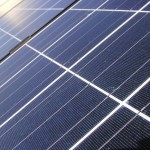China has an important share in world patents for upstream high-value processes in photovoltaic cell manufacture, such as the production of silicon, ingots and wafer segments. But those patenting activities are the result of Chinese public research institutes’ efforts to break the country’s dependence on foreign suppliers of hi-tech components, according to researchers from Mines Paris Tech. That R&D is not a result of Chinese firms seeking to improve their competitiveness.
While China is the world’s largest supplier of PV modules, its PV production industry is focused on the assembly of from
wafers and the soldering of those cells together, before they are encapsulated in glass sheets and cooked in a laminating machine.
The upstream processes of purifying silicon, growing it into ingots and slicing the ingots into wafers account for 40% of the costs of a final PV module, but 82% of the profit. And because the technological barriers to cell production and module assembly are low, the competition is fierce. Smaller Chinese suppliers take a big hit when the market-is oversupplied or demand reduces.
Chinese PV production is very much a home-grown industry. Of the nine leading Chinese firms in the sector only three have investment links to foreign companies, and those three are relative latecomers – despite the fact that over 90% of China’s PV cell production is exported. Licensing has also played no part on the development of the Chinese PV industry, which today is the world leader. To date, the high cost of PV-generated electricity has discouraged the Chinese from providing their own feed-in tariffs
According to Professor Matthieu Glachant of Mines ParisTech, the Chinese have acquired PV production knowhow mainly from the international suppliers of PV manufacturing equipment, and by tapping into the skills of the vast Chinese diaspora in other countries. China’s leading supply position in the PV market is all about their ability to hammer down costs. The Chinese invest less in R&D than their competitors in Japan or Western countries. Their success is a result of their hard-nosed ability to cut out costs.
Chinese firms that involve themselves in patenting of upstream PV processes tend to be driven by a desire to capture government subsidies, not improved market competitiveness. It is the government that has identified dependence on foreign hi-tech suppliers as a strategic weakness. The government therefore favours firms that illustrate a desire to close that technology gap.
Click here to read the rest of this article on Leonardo Energy







No comments yet.